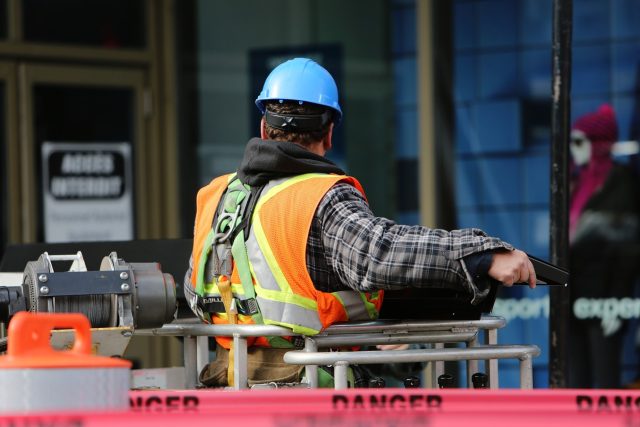
Work equipment is indispensable in various industries, facilitating efficient and effective task completion. But it is essential to be aware of potential risks, malfunctioning, or unsafe work equipment that can pose health risks and damage workers’ productivity.
This content piece aims to delve into the critical dangers of work equipment, including some significant hazards. By comprehending these risks, employers and employees can implement necessary safety measures to prevent accidents and injuries.
What is Work Equipment & Why is work equipment safety important?
Work equipment encompasses different types of machinery, tools, appliances, installations, and vehicles used in most workplaces. It includes all display screen equipment and power tools to production machinery and office equipment.
Putting it simply, any equipment employed in the execution of work tasks falls under the umbrella of work equipment.
Prioritizing work equipment safety is significantly essential for several reasons. It helps in maintaining the worker’s safety and health by providing a secure and productive workplace.
The risk of injuries or accidents significantly reduces when the equipment is adequately maintained and regularly inspected.
Moreover, organizations and their employers are legally required to provide a secure working environment. It includes implementing appropriate work equipment safety measures and educating employees on potential risks. One such example includes the PUWER risk assessment course, which clearly explains equipment inspection and adequate maintenance.
Common Dangers of Using Unsafe Equipment
Some common work equipment dangers include:
· Mechanical Hazards
Mechanical hazards pose a substantial threat within workplaces. Such risks may arise from moving parts, friction, cutting edges, or pressurized components.
Mechanical hazards include unguarded machinery, faulty equipment, and inadequate safety devices.
To mitigate these risks, employers must conduct thorough risk assessments, offer comprehensive training on equipment usage, and implement protective measures such as machine guarding.
· Electrical Hazards
Electrical hazards are common in workplaces involving the regular use of electrical equipment.
Hazards from faulty electrical equipment are electrical shocks, burns, and even fires. Faulty wiring exposed electrical components and improper utilization of electrical equipment also contribute to electrical dangers.
It requires employers to undertake regular inspections, adhere to proper maintenance practices, and provide adequate training to employees to prevent accidents and injuries.
· Chemical Hazards
Work environments that involve the regular use and handling of hazardous chemicals present risks to employees.
Chemical hazards also root for major health concerns that could occur from chemical exposures, unsafe handling, or inadequate use of personal protective equipment (PPE).
Employers must identify and label hazardous chemicals appropriately, provide comprehensive training on handling and storage, and implement adequate measures such as proper ventilation and PPE to safeguard employees against chemical hazards.
· Ergonomic Hazards
Ergonomic hazards stem from inadequate workstation design and poor body mechanics. Engaging in prolonged repetitive movements, utilizing improper lifting techniques, and working at poorly designed workstations can result in musculoskeletal disorders and physical discomfort.
Employers should prioritize ergonomic assessments within their working settings, provide comprehensive training, and introduce ergonomic solutions like proper workstation setup, ergonomic tools, and regular breaks to mitigate ergonomic hazards.
Conducting Workplace Risk Assessment
Regular risk assessments are paramount in any work environment for identifying potential dangers associated with work equipment.
A comprehensive risk assessment evaluates the work environment, equipment usage, and employee tasks to identify and prioritize hazards.
By understanding the risks involved, employers can implement appropriate control measures to minimize or eliminate these dangers.
Legal Obligations
Employers bear legal obligations to ensure work equipment safety. Various regulations around the world require businesses to create a secure and safe workplace for their employees, one such example is Occupational Safety and Health Act (OSHA) in the United States.
Compliance with these regulations requires businesses to undertake regular risk assessments, provide necessary training, inspect and maintain the equipment regularly to identify any default, and establish effective procedures for incident reporting and near misses.
Safety Measures
To mitigate the dangers associated with work equipment, employers must also implement several safety measures; these include:
- Provision of appropriate personal protective equipment (PPE) to employees for specific tasks
- Regular inspection & maintenance of work equipment to ensure proper functioning
- Display clear signage, warnings & labels on equipment to communicate hazards and implement safety precautions
- Establish clear procedures for the safe operation and usage of equipment, including start-up and shutdown protocols
Information, Training & Guidance
Alongside work equipment hazards, adequate training, information, and guidance are pivotal in minimizing work equipment accidents and injuries.
Employers must consider their staff training needs and provide thorough training on the safe operation of equipment and clear instructions on proper usage, maintenance, and emergency procedures.
Ongoing education and refresher courses are also helpful in ensuring employees stay updated with safety protocols and best practices. Some examples in the include PUWER risk assessment training or work equipment training.
Reporting and Communication
Open and effective communication channels are essential for reporting hazards and addressing safety concerns related to work equipment.
Companies must consistently implement practices that foster a culture of transparency, encouraging employees to report any potential dangers or near misses promptly.
Establishing a non-punitive reporting system promotes a proactive approach to safety and allows for timely actions to prevent accidents.
Maintaining Work Equipment
Regular maintenance and inspections are critical in ensuring work equipment remains in optimal condition.
Businesses must schedule regular maintenance tasks like lubrication, calibration, and equipment checks. Responsible persons must promptly address any defects or malfunctions to prevent hazards and maintain the safe operation of the equipment.
Besides this, raising awareness among staff is also important to make sure they follow the right work practices when using different tools for work to minimize the risk of injuries to themselves and others around them.
Conclusion
Work equipment entails various dangers that can compromise the safety and well-being of employees. Mechanical, electrical, chemical, and ergonomic hazards are among the top risks associated with work equipment.
Employers have legal and ethical responsibilities to prioritize work equipment safety and implement necessary measures to prevent accidents and injuries.
Organizations can create a secure work environment and protect their employees’ most valuable assets by conducting thorough risk assessments, providing comprehensive training, maintaining equipment, and fostering a safety culture.













